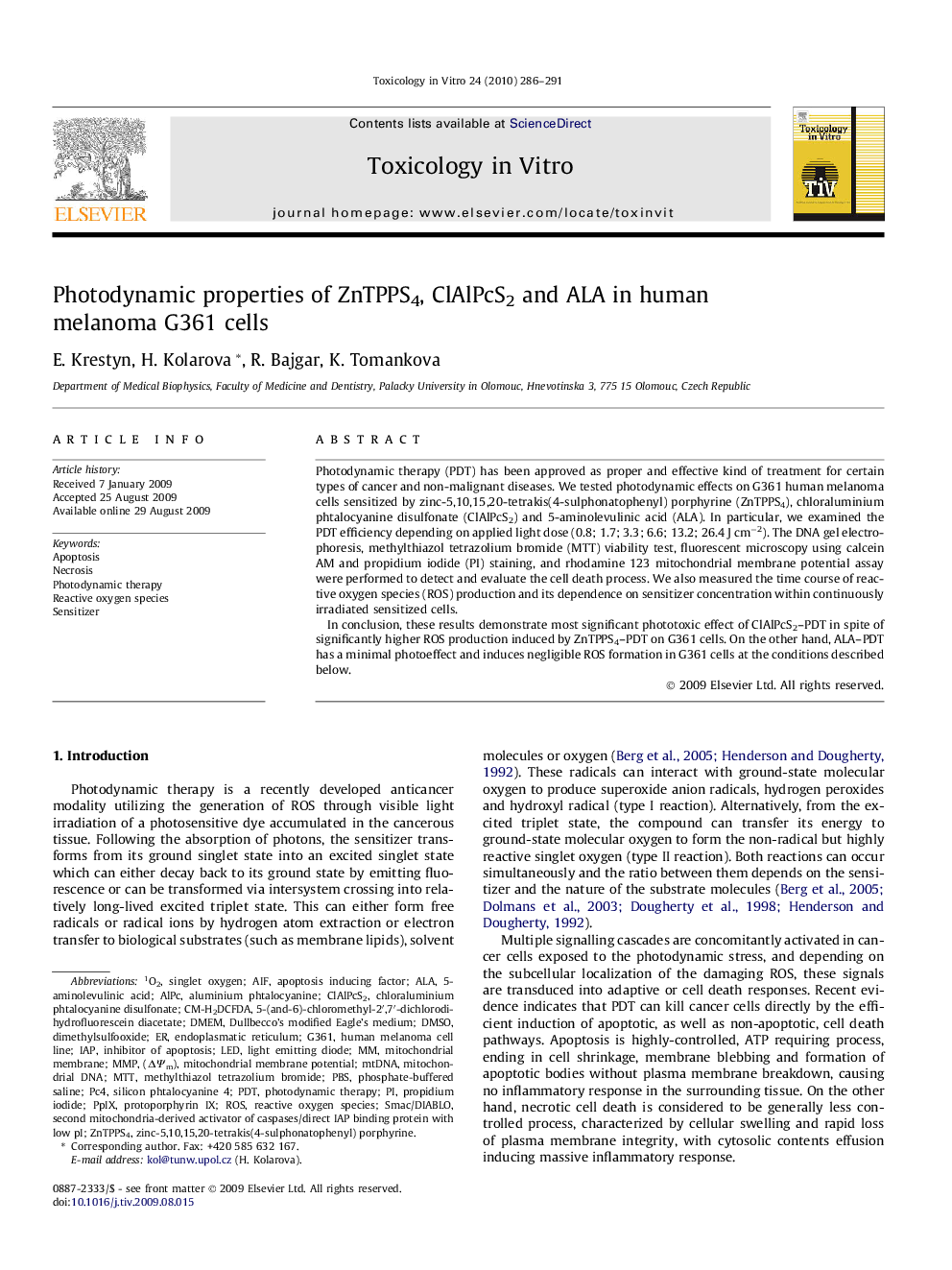| Article ID | Journal | Published Year | Pages | File Type |
|---|---|---|---|---|
| 2603555 | Toxicology in Vitro | 2010 | 6 Pages |
Photodynamic therapy (PDT) has been approved as proper and effective kind of treatment for certain types of cancer and non-malignant diseases. We tested photodynamic effects on G361 human melanoma cells sensitized by zinc-5,10,15,20-tetrakis(4-sulphonatophenyl) porphyrine (ZnTPPS4), chloraluminium phtalocyanine disulfonate (ClAlPcS2) and 5-aminolevulinic acid (ALA). In particular, we examined the PDT efficiency depending on applied light dose (0.8; 1.7; 3.3; 6.6; 13.2; 26.4 J cm−2). The DNA gel electrophoresis, methylthiazol tetrazolium bromide (MTT) viability test, fluorescent microscopy using calcein AM and propidium iodide (PI) staining, and rhodamine 123 mitochondrial membrane potential assay were performed to detect and evaluate the cell death process. We also measured the time course of reactive oxygen species (ROS) production and its dependence on sensitizer concentration within continuously irradiated sensitized cells.In conclusion, these results demonstrate most significant phototoxic effect of ClAlPcS2–PDT in spite of significantly higher ROS production induced by ZnTPPS4–PDT on G361 cells. On the other hand, ALA–PDT has a minimal photoeffect and induces negligible ROS formation in G361 cells at the conditions described below.
